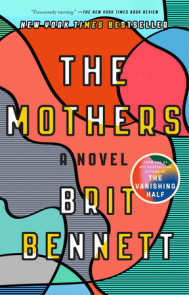READERS GUIDE
Questions and Topics for Discussion
1. Chapter 2 starts with “an anecdote . . . of how the city’s veneer of civility was constantly giving way, in places it was barely there at all.” Are there other examples of this façade in the book, in either the city itself or the people living there and their actions?
2. The book opens with the death of a parent and the physical distance of another—how do you think this influences the narrator’s decisions and motivations throughout the story?
3. Many aspects in the story are either impermanent or shifting (Jana’s neighborhood, the protagonist’s work contract and relationship status, even her housing situation). In what ways does this reflect the narrator’s mind-set and how it develops throughout the book?
4. The narrator’s job is interpreting—does this influence how she interacts with the other characters and her environment? Do you think it’s positive or negative? And in your opinion, does it affect her reliability as a narrator?
5. Given how important their interpretation is to how the witnesses and accused are represented, are the Court’s interpreters at all responsible for the outcomes of the trials they work on? What does this say about the idea of “truth”?
6. How does security—in oneself, in one’s space, in one’s relationships—affect the progression of the story? What does that mean for the narrator’s sense of belonging?
7. Amina says that there is a required understanding between the accused and their interpreter. Are there instances in the book when intimacy is confused with proximity or familiarity, and vice versa?
8. As the protagonist often feels unmoored in her life at the Hague, are there times when she seems to have a stronger connection to the person she is interpreting for than to other characters in the novel? What do you think this means for her new city and relationships?
9. Adriaan becomes a “more complicated figure” in the narrator’s imagination when she learns about his past. Does the same happen for other characters surrounding her? And are they real observations, or are they attributed to the narrator’s longing to feel close to someone?
10. Kees describes Gaby as “never very sensitive . . . very used to people listening to her, whatever her faults, you must admit that she was—or rather she is, because . . . she is still with us—a fascinating woman.” How does her influence, largely without a physical presence, affect the main character and her relationship with Adriaan?
11. There is a stark contrast between how open Adriaan is with the narrator at the beginning of the novel versus the middle and the end. What do you think this means for his character? Is he genuine?
12. How does the idea of intimacy play throughout the novel? What are the different kinds of intimacies the characters show or experience?




















